I like cryptomeria bonsai a lot. Unperturbed by the warnings of how much work they can be, I’ve looked for a good specimen with little success for 10-15 years. Maybe they are too much work. Upon hearing that he would no longer be required to maintain a large cryptomeria, Boon Manakitivipart cried out, “I’m free!” Removing a single tree from a collection had added three free days to his calendar this year – and that’s just the time it takes to complete summer cutback.
I knew air layers were a great way to start cryptomeria, or tsugi, bonsai from scratch, so I bought a large tree with straight shoots from Lone Pine Gardens.
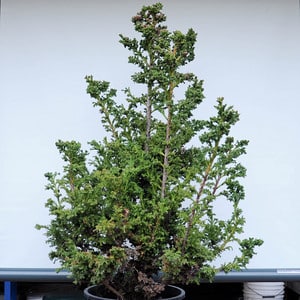
Cryptomeria
The air layer process is simple – remove bark, pack with moss, keep moist until there are enough roots to support the tree. My best candidate from this tree is a young apical shoot.
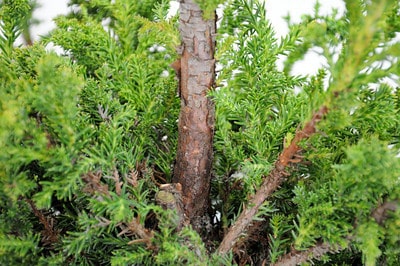
A great spot for new roots
I begin by cutting two rings around the shoot about an inch apart from each other with a grafting knife. I then remove the bark between the rings.
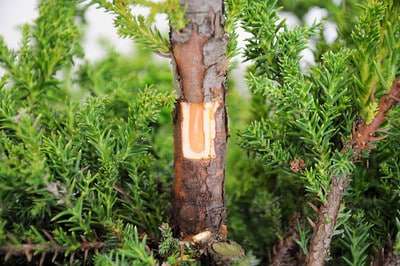
Removing the bark – note the light colored bark and darker wood below it
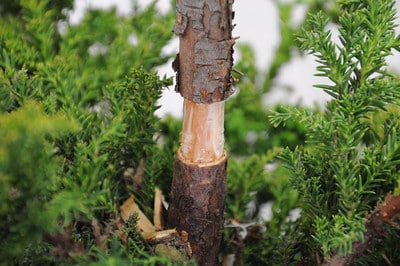
Bark removed
This is the trickiest part of the process. It’s important to remove every last bit of bark as leaving any in place will prevent roots from growing in that spot. Once the bark is removed, I cut a sheet of plastic to keep the moss in place.
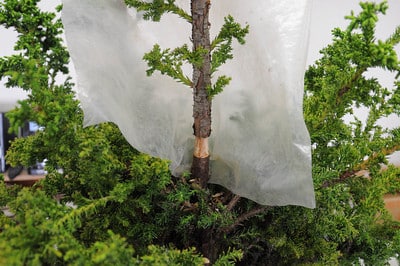
Plastic sheet
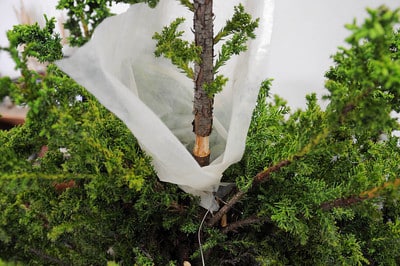
Securing the base of the sheet with a long piece of aluminum wire.
With the plastic in place, I can start packing the plastic with damp sphagnum moss. I use the white sphagnum moss as it doesn’t turn as moldy as the green moss.
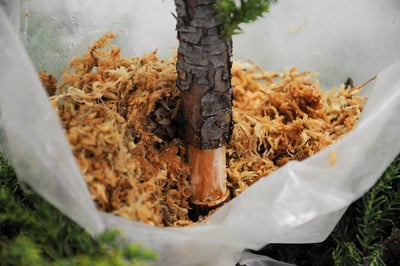
Packing the layer with sphagnum moss
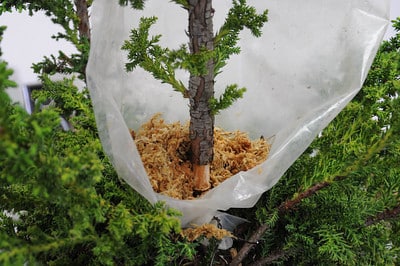
Almost done
With moss completely surrounding the area where I removed the ring of bark, I wrap up the plastic with the aluminum wire. Toward the top, I leave a gap so I can water the moss as it dries out.
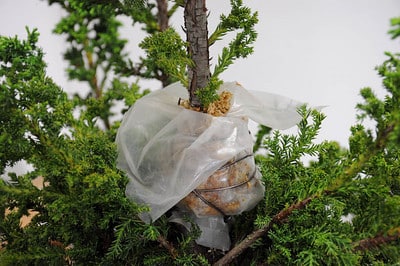
Wrapping the plastic with wire
How long until I can remove the layer? We’ll see. Last year I waited almost a year which turned out to be longer than necessary. I’ll check the roots in a few months and see how they are doing. If there are enough roots, I’ll remove the layer in fall. Otherwise, I’ll wait until early spring.
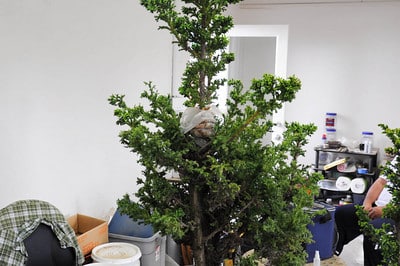
Air layer complete
It’s possible that I’ll have close to half a dozen cryptomeria bonsai next year – a good recipe for lots of future work. I’m looking forward to it.
Subscribe to Bonsai Tonight
New Posts Delivered Every Tuesday and Friday
Bruce says
I’m wondering why you chose moss over substrate in a pot, which for me results in straighter roots radiating out instead of a tight clump.
Just curious.
xwires says
Hi Bruce – using moss is fast and easy. I like using bonsai soil for layering larger trees or for projects that will take longer. I’ll post photos of the roots that grow in the moss soon.
Daniel Dolan says
Jonas:
Really nice photo sequence. I am checking in regularly now to learn from your demonstrations.
I appreciate that there are many small differences in techniques for air layers…..especially involving covering the clear plastic with “black-out’ plastic….apparently to reduce/eliminate light? I take it you do not do that. Any views on this from your experience?
Thanks,
D/D
Chicago / Midwest Bonsai Society
xwires says
Hi Daniel – I don’t have experience with dark plastic. I’ve worked with successful layers done with soil in pots, clear plastic, and plastic mesh (drainage screen) and all can produce good roots.
Justin Rotert says
The tree doesn’t die because you took a whole ring of bark? don’t most conifers die in the section where the bark was completely removed?
Thanks!
Justin
xwires says
Hi Justin – yes and no. The spot were bark is removed continues to pass fluids to the foliage above, however no new growth appears within that ring as the cambium is removed.
JayCee says
Have you ever tried air-layering an old fir (Abies) tree?
I have been told it would very slow (and risky) i am thinking of using the “flap”method leaving small bark bridges for safety raher than fullring barking – what is your view?